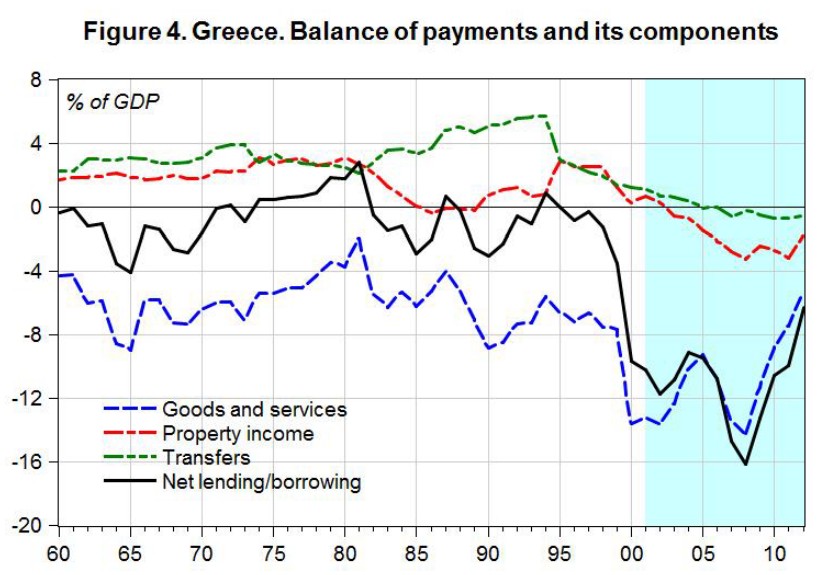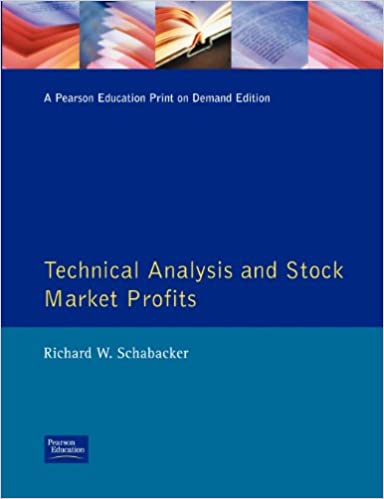

So long as pressure of excess demand continues price will rise i.e. till point E. At point E, excess demand is eliminated and quantity demand and supplied are equal to each other. → Price elasticity measures the degree of responsiveness of quantity demanded of a commodity to a change in its price. Depending upon the degree of responsiveness of the quantity demanded to the price changes, we can have the following kinds of price elasticity of demand. → Both individual and market schedules denotes an INVERSE functional relationship between price and quantity demanded. In other words, when price rises demand tends to fall and vice versa.
What is arc elasticity method of measuring elasticity?
Arc elasticity is the elasticity of one variable with respect to another between two given points. It is used when there is no general way to define the relationship between the two variables. Arc elasticity is also defined as the elasticity between two points on a curve.
Arc Method Any two points on a demand curve make an arc, and the coefficient of price elasticity of demand of an arc is known as arc elasticity of demand. This method is used to find out price elasticity of demand over a certain range of price and quantity. The coefficient of elasticity is tough to calculate on this case.
What is an example of price elastic?
There is direct relationship between income and demand for superior goods. Inverse relationship between income and demand for inferior goods. In the diagram on ‘OX’ axis measure total expenditure and ‘OY axis measures price. The total outlay curve AD is shown in three parts i.e., A to B; B to C and C to D. The term elasticity refers to the measure of extent of relationship between two related variable.
Comment on the likely shape of demand curve based on this measure of elasticity. Unitary elasticitymeans that a given percentage change in price leads to an equal percentage change in quantity demanded or supplied. The concept of price elasticity can be used in comparing the sensitivity of the different types of goods e.g., luxuries and necessaries) to changes in their prices.
In English & in Hindi are available as part of our courses for B Com. Download more important topics, notes, lectures and mock test series for B Com Exam by signing up for free. As the value of fuel increases and falls with the worldwide market, the demand rises and falls in close to direct correlation. Gasoline has an elasticity quotient of 1 or greater and has a flatter slope on a graph. On the X-axis, gross outlay or cost is calculated in the graph while the price on the Y-axis is measured. The transfer from point A to point B demonstrates elastic demand in the figure, as we can see that overall spending has risen with price decreases.
Types of Income Elasticity of Demand
Hence, advertisement elasticity helps to decide optimum advertisement and promotional outlay. Elasticity is a great concept to understand the dynamics of the market. It plays a significant role in the success of businesses. Companies selling high elasticity goods compete with other businesses on price and they are required to have a high volume of sales transactions to remain solvent.
According to this method the price elasticity of demand is expressed in three forms, they are elastic demand, unitary elastic and inelastic demand. Cross Elasticity of Demand is an economic concept that measures the responsiveness in the quantity demanded of one good when the price of other goods changes. ⇒ In perfectly elastic demand, a small rise in price results in a fall in demand to zero, while a small fall in price causes an increase in demand to infinity. Total expenditure method was developed by Dr. Marshall to measure the price elasticity of demand. If the percentage change in price is less than the percentage change in quantity demanded then price elasticity of demand is greater than one.
When the price change does not show any impact on total expenditure, it is called the Position of Unitary Elastic Demand. It means that total expenditure remains stable even that the price of commodities discuss arc method of measuring price elasticity of demand. changes. As, price is increasing, then quantity demanded must decrease by 4. In the above diagram on X-axis demand is shown and price is on Y-axis. Demand curves slopes downward from left to right.
→ A higher indifference curve shows a higher level of satisfaction than lower one. At point B the consumer is satisfied with OB quantity of X-commodity and zero quantity of A. Therefore, IC curve will not touch either axis. The indifference curve will not touch either X-axis or Y-axis because we have assumed that consumer is considering the different combinations of TWO commodities. The second reason is that, the goods are not perfect substitutes of each other in the satisfaction of particular want. If they are perfect substitutes, the MRS would not fall and remain constant.

Based on the value of elasticity variables are categorized as elastic or inelastic. An elastic variable is one that responds more than proportionally to changes in other variables. In contrast, an inelastic variable is one which changes less than proportionally in response to changes in other variables.
Inelastic means that the buying habit of consumers remains more or less the same, irrespective of the change in prices. Elasticityin either a supply or demand curve refers to a situation where a price change of one percent results in a quantity change of one percent. ⇒ The demand curve for unitary elastic demand is represented as a rectangular hyperbola. In the case of any two points of A and B on the curve, each rectangular area shows total expenditure on the good. Thus, the total expenditure on the good remains constant even as the price of the good increases or decreases.
AP Inter 1st Year Economics Study Material 3rd Lesson Theory of Demand
Thus, change in demand curve as a result of increase or decrease in demand, is technically called shift in demand curve. Thus, price remaining the same when demand rises due to change in factors other than price, it is called increase in demand. Here, more quantity is purchased at same price or same quantity is purchased at higher price. When the price of a commodity rises its quantity demanded fall or contraction takes place. → But, there are some situations under which there may be direct relationship between price and quantity demanded of a commodity.

The formula for calculating income elasticity of demand is the percent change in quantity demanded divided by the percent change in income. This concept helps us to find whether a good is a necessity or luxury. It represents that if there is rise in price from ON to OR, total expenditure decreases from NB to RA. It represents that when the price reduces from OM to OP, then the total expenditure also decreases from MC to PD. In this figure total expenditure is shown on X-axis and price on Y-axis. The BC segment of this curve shows the unitary elasticity as when price rises from P2 to P3 total expenditure remains the same.
NCERT Solutions for Class 12 Micro Economics Chapter-4 Elasticity of Demand
We consume some goods as we are addicted to them. Two of the most popular examples are alcohol and tobacco. We will understand the role of time with an example. Suppose the government increases the taxes on tobacco which leads to an increase in the prices. So, a person addicted to smoking won’t stop buying cigarettes. However, if the prices go on increasing and the person now can not afford to spend extra on those cigarettes, he or she may get rid of the habit.
What is arc method of measuring price elasticity of demand?
The arc price elasticity of demand measures the responsiveness of quantity demanded to a price. It takes the elasticity of demand at a particular point on the demand curve, or between two points on the curve. on a graph. outcome whether price falls or rises.
If the demand for a commodity changes even though there is no change in price then demand is called perfectly elastic. It also indicates that if a very small change is done in price then quantity demanded would changes indefinitely and due to this reason seller would not change the price. Income elasticity is measured as ratio of % change in quantity demanded to % change in income, holding all other demand determinants fixed. The price elasticity of demand is measured by its coefficient . This coefficient measures the percentage change in the quantity of a commodity demanded resulting from a given percentage change in its price. We use the point elasticity of demand to calculate exactly how a change is price affects the demand for a specific good.
→ In the diagram, when the consumer moves from combination A to combination B, he gives up AC of Y and takes up CB of X and gets the same level of satisfaction. In the schedule I above, the consumer is indifferent whether he gets combination A, B, C or D. This is because all combinations give him same amount of satisfaction and therefore equally preferable to him.
Income Elasticity of Demand
Equilibrium price is the price at which the sellers of a good are willing to sell the quantity which buyers want to buy. Thus, equilibrium price is the price at which demand and supply are equal. When the seller expects a further rise in the prices in future, he may hoard stock of commodity. So the supply at present will fall and vice versa. → The supply schedule shows that when price rises from ₹ 10 per unit to ₹ 20 per unit, the supply also rises from 20 units per week to 30 units per week and so on.
- → It reflects how sensitive buyers are to change in price.
- Explain with the help of a diagram, the geometric method of measuring price elasticity of demand.
- Income elasticity less than unityThe income elasticity of demand measures the responsiveness of sales to changes in income.
The figure shows that demand curve DD is parallel to X-axis which means that at given price, demand is ever increasing. → Price elasticity of demand can be defined “as a ratio of the percentage change in the quantity demanded of a commodity to the percentage change in its own price”. → When price of a commodity falls, its quantity demanded rises. The price elasticity of demand is useful to sellers.
Similarly, EB segment shows the greater than unitary elasticity since as the price increases from P3 to P4 total expenditure decreases from P3B to P4A. PC segment of the expenditure curve shows less than unitary elasticity as when price increases from P1 to P2 total expenditure increases from P1D to P2C. Price elasticity of demand refers to the degree of responsiveness of quantity demanded to a change in price of the commodity. In simple words, it is the ratio of percentage change in quantity demanded to a percentage change in price.
The availability of substitutes of a commodity is the important determinant of the demand elasticity for that commodity. If the substitutes are very close then the elasticity of demand would be greater for the commodity. For example, Coke and Pepsi may be considered as a close substitute for each other. On the other hand, soap and toothpaste do not have their close substitutes and price-elasticity is lower for these two goods. Price elasticity of supplyis the percentage change in the quantitysuppliedof a good or service divided by the percentage change in price.
What is arc elasticity method of measuring elasticity?
Arc elasticity is the elasticity of one variable with respect to another between two given points. It is used when there is no general way to define the relationship between the two variables. Arc elasticity is also defined as the elasticity between two points on a curve.

